The prospect of being left without heat in the cool autumn and frosty winter period will please few people. If this happens, then, at best, it is possible to return a comfortable temperature regime to the room in a few hours. After all, it takes time for the master to come on call.
To quickly fix the problem, it would be nice to learn how to identify and eliminate the cause of the malfunctions yourself. You need to figure out why the gas boiler goes out, and try to get rid of at least elementary malfunctions on your own. We'll show you how to find them.
Of course, no one forces you to dismantle equipment or change a part on your own if there are no tools or preparation for this. However, information about simple and affordable repair operations will come in handy. In addition, they will help control the actions of gas workers, not all of whom are quite experienced and competent.
The content of the article:
- Why can the burner go out at all?
-
The main causes of attenuation
- Decreased / lost traction
- There is a reverse draft in the chimney
- Burner nozzle or filter clogged
- The pressure in the gas line has decreased
- Not enough oxygen to burn gas
- Electrical disturbances
-
Typical problems with turbo boilers
- Icing of the hood or chimney
- Faulty fan or turbine
- Typical problems of double-circuit boilers
- Conclusions and useful video on the topic
Why can the burner go out at all?
The damping of the boiler occurs as a result of the operation of the device's automation, which reacts to the following disturbances in the operation of the system:
- the draft in the chimney has decreased or disappeared;
- the gas pressure in the supply line has dropped;
- the flame in the burner is extinguished.
Moreover, these processes can occur both as a result of internal breakdown and due to the influence of external factors.
Considering floor models (producers: Danko, Aton, ROSS, Zhitomir), then they have a primitive internal design. Therefore, there is nothing special to break in them, if you figure it out. Attenuation in this case occurs most often due to strong wind outside or other external factors.
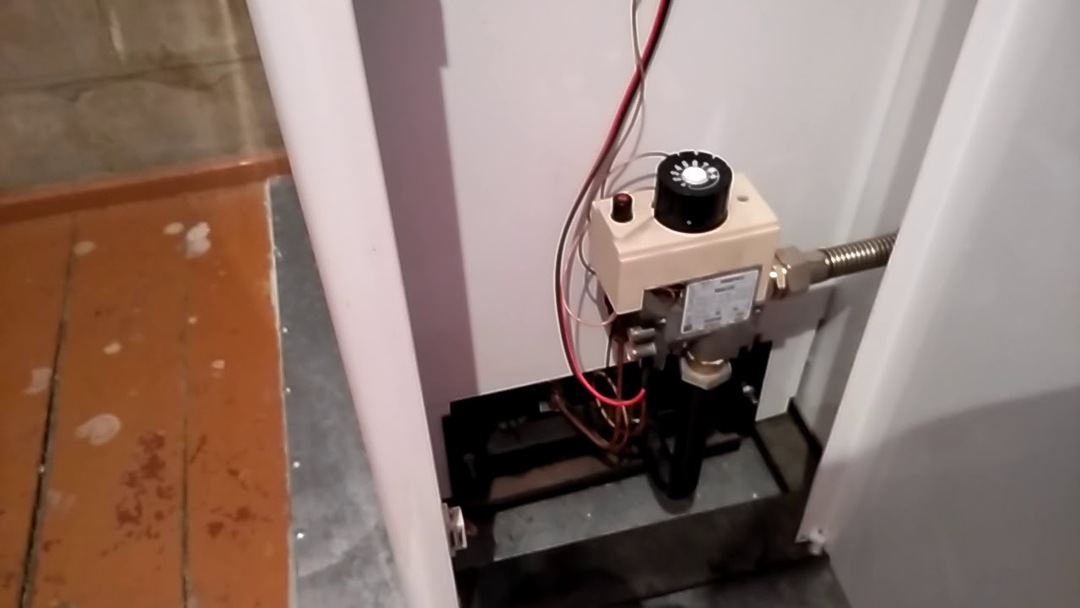
Floor standing gas boilers are simple in design, so it will not be so difficult to eliminate the cause of their attenuation.
But wall-mounted gas boilers in their design already resemble an autonomous mini-boiler room, and therefore there may be more options for stopping the operation of a gas boiler:
- the circulation of the coolant was interrupted or did not start after the repair of the circuit (the flow sensor responds);
- the air supply has decreased / stopped (the pressure switch is activated);
- voltage drops occur;
- power outage.
If the hinged heat generator has gone out, it is not easy to restore its operation. However, some malfunctions are still quite realistic to eliminate on their own. You will find out how to do this below.
The main causes of attenuation
If before that the equipment worked properly, and now the automatic valve began to shut off the gas supply, there may be several reasons. Depending on them, the ways to eliminate them will be different.
Decreased / lost traction
Rule # 1 in case of attenuation atmospheric boiler: check traction. This can be done with a match or lighter, which should be brought to the viewing window.
Further actions depend on the behavior of the flame:
- if it deviates towards the combustion chamber, there is thrust - everything is in order;
- if it remains upright, there is no thrust.
It is important not to forget to close the gas supply valve well. But that's not all.
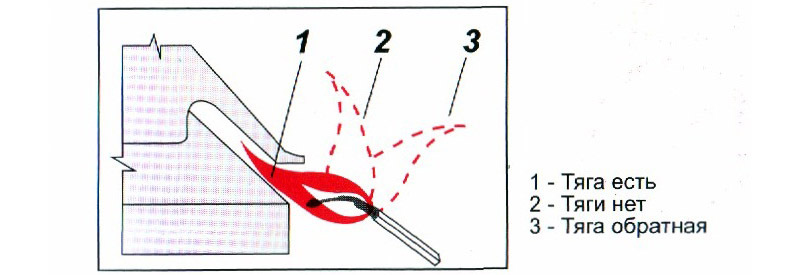
A regular match will become your traction test tool.
Remove the part of the pipe that is connected to the outlet pipe and check the draft now in the chimney:
- if there is one, you need to clean the boiler channels;
- if not, you can limit yourself to cleaning the chimney.
What exactly do you have to clean? Where does the pollution come from in the chimney? It accumulates natural combustion products in the form of soot and soot deposits, fallen leaves, and sometimes even the boiler goes out because of a bird that has flown in!
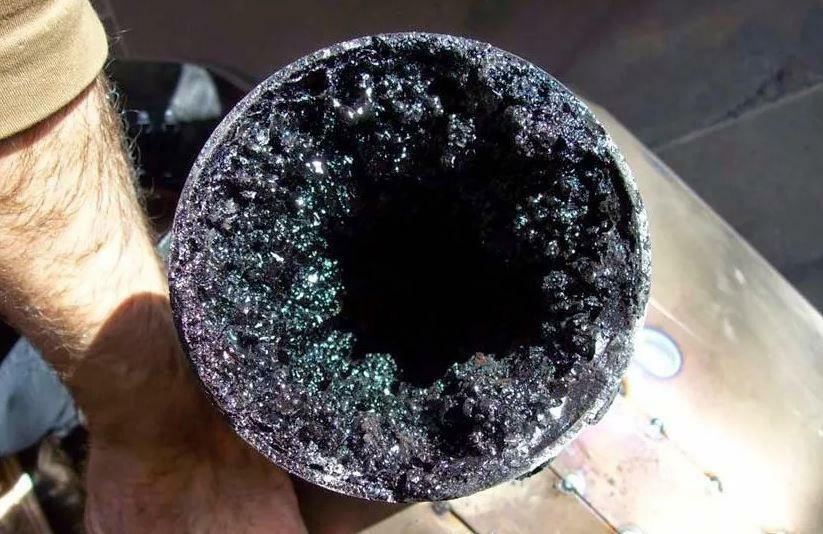
Most often, the chimney is cleaned of soot, but sometimes other “surprises” are found in it in the form of bird nests, leaves and other debris.
If a blockage has formed at the inlet, it will not be difficult to clean it yourself. But if in the upper part of the pipe, you will have to wait for the master with the tools (you may have to use the access from the roof).
There is a reverse draft in the chimney
Sometimes the boiler can go out due to back draft. This means that due to blowing out the gas boiler the wind does not leave the smoke from the chimney outside, but returns back to the firebox, thereby knocking down the flame.
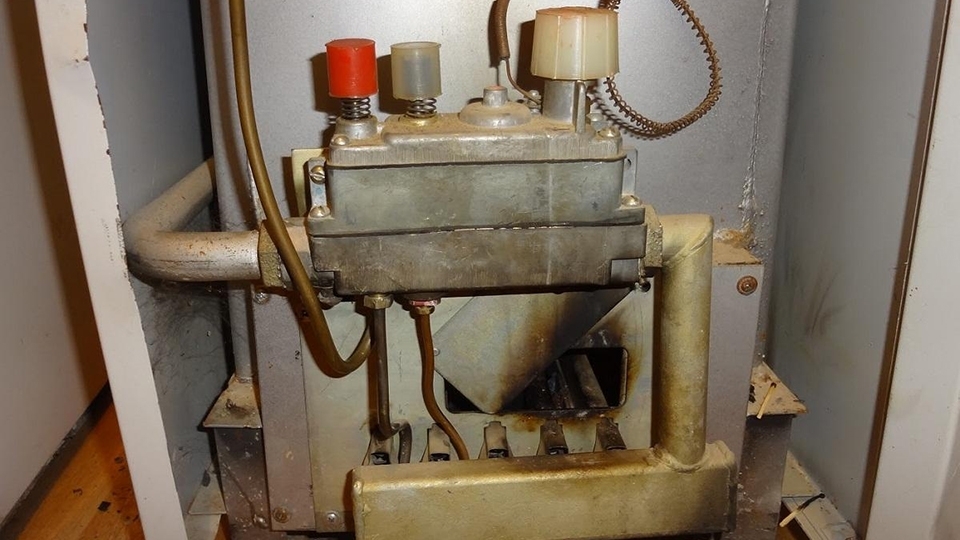
Back draft in the boiler occurs due to a clogged chimney inside the house or due to a blockage in the outer part of the chimney. If a deflector is not installed on the chimney, the boiler can go out due to the blowing out of the flame by gusty winds.
The solution to the problem can be alternative:
- Install a protective cap at the end of the chimney (popularly called a deflector, popularly called a "fungus").
- Extend the chimney itself by 1–2 m if, due to the height and location of nearby buildings, there is a violation of the circulation of air masses.
Cornice-type caps are currently prohibited according to SNiP II-35 and SNiP 02.04.05. However, in some cases, their installation may be the only way out - so it's still better to consult with gas workers.
Burner nozzle or filter clogged
If the igniter does not light up when the boiler is turned on, this is a sure sign that the starting elements are clogged. Namely, you will have to clean the igniter nozzles, fine mesh inlet filter or pilot burner filter. You can do this yourself with the help of handy tools.
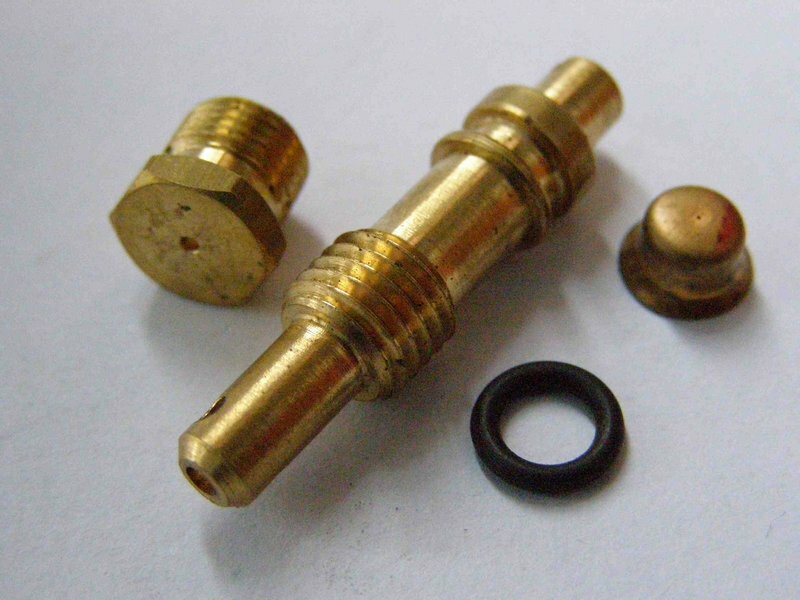
The nozzle, which can cause the gas boiler to fade, should be periodically cleaned of soot and carbon deposits that impede ignition.
For example, filters are easily blown through (even just blowing is enough, but if there is a handheld vacuum cleaner or pneumatic spray, it will, of course, be more convenient). You will have to tinker with the nozzles - scrape off carbon deposits with a thin copper wire until the original diameter of the nozzles "returns".
The pressure in the gas line has decreased
Turning off the burner is the very first sign of a drop in pressure in the gas supply line, while the igniter flame does not go out when the boiler stops working.
First of all, assess how the gas flows through the pipeline. To do this, unscrew the hose of the nozzles and open the valve fully, and then see:
- if there is a strong hiss and the smell of methane is released, everything is normal with the supply;
- if the signs are almost invisible or absent, the problem is in the gas supply system.
After that, immediately close the shut-off valve, return the hose to its original position and check the tightness of the joints with soapy water (if it foams at the joint, this is 100% leakage).
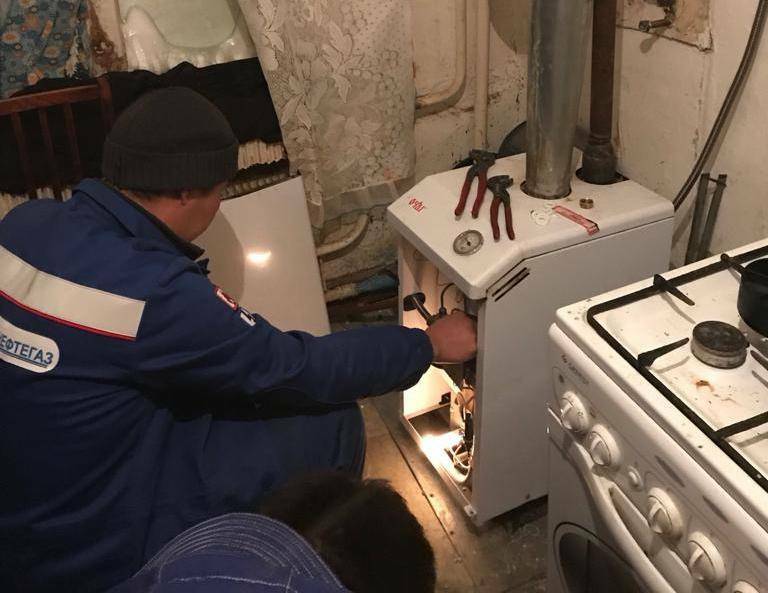
If you find a leak, immediately turn off the gas, open windows and doors in the room, evacuate people from it and call 04, 104 or 112. These problems should be eliminated by gas workers
If there is no leakage, deal with the meter: after repairs, scale or rust may remain in it, which will make the gas pass poorly. "Hammered" flow meter shows incorrect data.
However, the gas flow meter itself cannot be cleaned in accordance with Resolution No. 261-FZ. This should only be done by representatives of the gas service with the appropriate license.
Not enough oxygen to burn gas
Poor ventilation can also cause the boiler to fade. Let's try to figure out what this means.
Insufficient air intake is most often caused by the following prerequisites:
- tightness of plastic windows;
- insulated gloomy interior doors;
- boiler room layout with violations;
- overly powerful hood in the kitchen;
- forced ventilation in the bathroom and toilet.
You can check the oxygen deficiency by opening the window and turning on the gas burner. If the flame has stabilized, the situation is nowhere clearer.

Even a high-power extractor hood in the kitchen, which redirects the air flow in the room to its own exhaust duct, can cause the boiler to fade.
The problem is solved as follows: install supply valves on the windows or organize a forced air intake system from the street by installing supply ventilation valve in the wall.
Electrical disturbances
Due to a communication failure with the thermocouple, incorrect signals about the absence of flame are sent to the solenoid valve. This stops the gas supply.
When exactly the boiler goes out immediately after a short operation or after choosing a different mode, this is already a signal of problems in the electrical circuit:
- rupture of contacts of a thermostat, thermocouple or vacuum sensor;
- the thermocouple does not enter the flame zone or does not give the required voltage;
- breakdown of the thermostat, solenoid coil or thermocouple.
All these problems can also be solved without calling the wizard. The main thing is to stick to the algorithm.
In order not to get lost in the correct sequence of actions, do the following step by step:
- check the resistance on the sensors and connecting devices one by one - in the norm 0.3–0.5 ohms;
- clean all "oxidized" places with fine sandpaper, tighten loose contacts;
- disconnect the thermocouple from the main unit, connect the tester and, by pressing the start button, turn on the ignition burner;
- measure voltage - normal 10-50 mV.
If all is well, put everything back in place, adjust the position of the thermocouple. If there is no voltage, remove the top cover of the main unit, warm up the thermocouple with a splinter, press the safety valve, and then release.
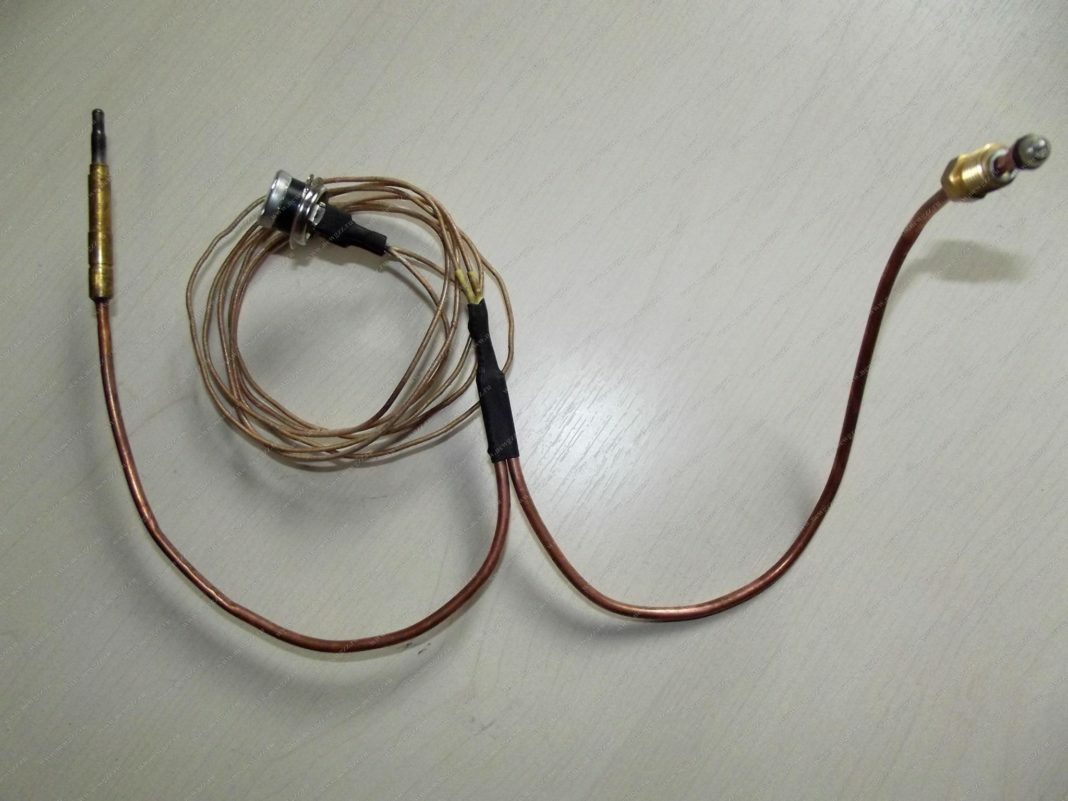
The reason for the extinction of the boiler may lie in the incorrect operation of the thermocouple. In this case, you need to check the wiring contacts
If the valve still holds, remove the block with contacts and apply voltage (220 V power) to the coil bypassing the thermostat.
After these manipulations, you can start the boiler. If the problem persists, then the old thermocouple and solenoid valve coil cannot be repaired. We need new parts.
Typical problems with turbo boilers
The problems described above also occur in relation to turbocharged boilers. But in addition, given the equipment with additional elements of boilers with a closed combustion chamber, additional "troubles" may also happen to them.
For example, in the process of their operation, you may encounter the following difficulties:
- icing coaxial chimney outside the house;
- breakdown of the built-in air blower.
Their design, of course, is more complicated than that of models with an open combustion chamber. But at the same time, all the same manipulations can be carried out with them as with atmospheric boilers.
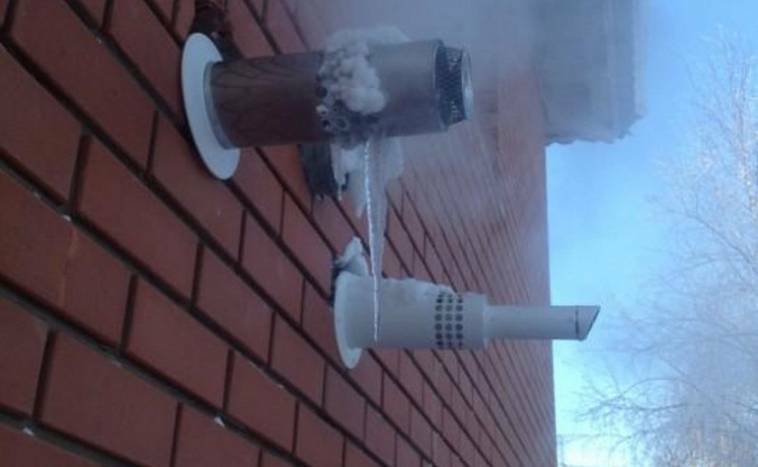
Condensation build-up and icing are also common causes of boiler damping. This happens if, during installation, the standard slope was not observed, which ensures the drainage of condensation moisture
But let's dwell in more detail on the breakdowns that are characteristic of this particular type of equipment.
Icing of the hood or chimney
If you observe that the boiler goes out most often in frosts, then most likely the chimney opening is blocked by an ice mass.
This can be due to:
- the formation and accumulation of condensate;
- snow adhesion.
As you can see, the reason lies in bad weather conditions. Therefore, the solution to the problem is to protect the chimney from external factors.
In this case, again, it is worth considering the option of installing the "fungus", i.e. deflector. But this is a preventive measure. But what to do if the problem is already "ripe", and the weather conditions further aggravate the situation? There is also a way out in this situation.
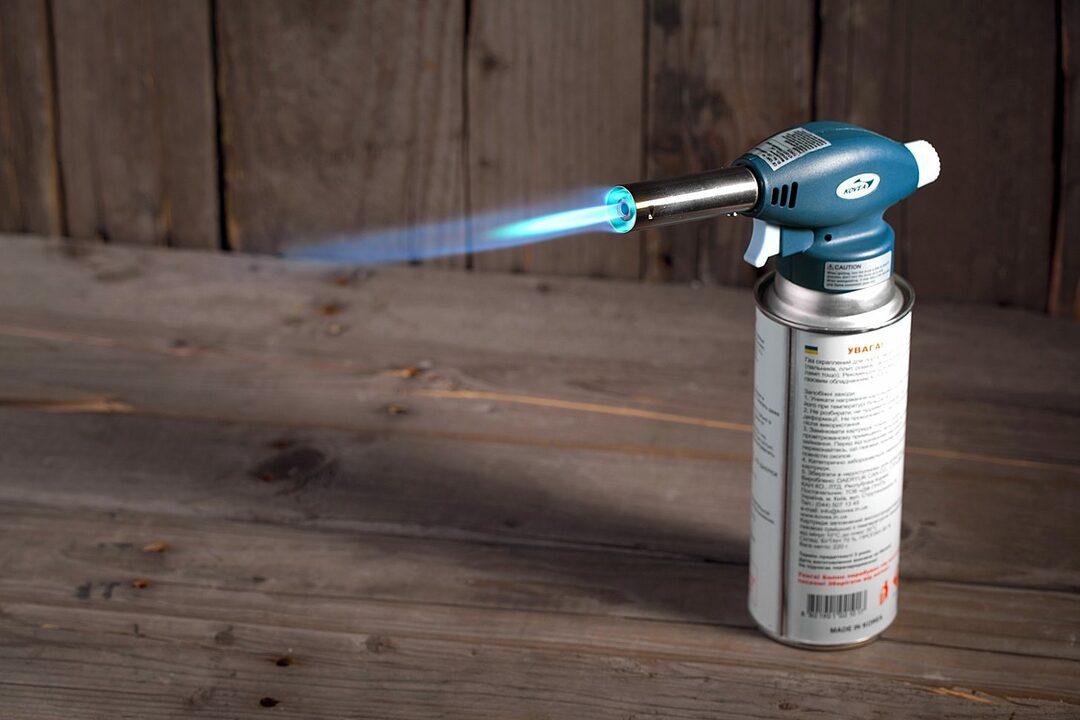
You can “melt” the chimney, that is, get rid of ice jams, using a construction hair dryer or a gas burner on a can
The settling of condensate in the pipes is typical for convection boilers with a coaxial chimney. Traffic jams are formed in them due to the temperature difference between the air flows drawn into the burner from the street and going outside. These ice jams block the path both to the combustion chamber and from it.
To remove the ice crust from the coaxial chimney, it may even be necessary to dismantle the outer part of it. Dismantling will not affect the day-to-day operation of the system, but it is still better not to bring it up to this. Sometimes, in order to prevent the accumulation of condensate in the gap between the pipes, a couple of holes are drilled in the outer loop.
Just breaking the ice is not an option. Moreover, the chimney may be damaged. Better to buy a portable canister gas burner and "melt" the chimney with it. After the plug melts, the boiler will start working again. But so that such incidents do not arise in the future, the pipes should be insulated.
The second prerequisite arises in cases of installation of eaves caps: they protect the chimney from precipitation, but in winter they cause more trouble than benefit, making it difficult for the outflow of flue gases.
Faulty fan or turbine
When the wick of a gas boiler with a built-in blower suddenly goes out during operation or does not initially light up the wick of a gas boiler with a built-in blower, listen to what sounds it makes.
During normal operation, the turbocharging system should hum at a measured rate, so you should be on your guard with the appearance of extraneous noise.
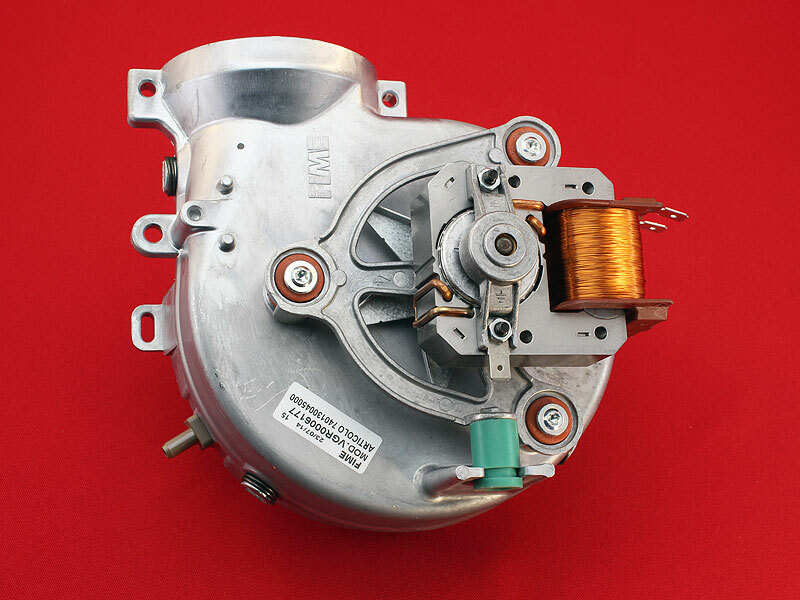
The turbocharger applied to the design of boilers with a closed combustion chamber is in most cases beyond repair - it is easier to replace it immediately
If there are no any during operation, the breakdown is obvious: that is, the automation does not allow opening the safety valve, so the wick does not light up.
In this case, we strongly recommend not to engage in amateur performances, but immediately call the gas workers. In most cases, a turbocharger cannot be repaired - most likely it will have to be changed, and such work is fraught with the risk of carbon monoxide spreading throughout the room.
Therefore, it is better if control over this process is carried out by a gas operator from the company with which the service contract equipment and gas supply.
Typical problems of double-circuit boilers
Double-circuit modifications of gas boilers, designed for the preparation of a heat carrier and hot water, can also fade out for all the reasons described above. But if there are no signs of the above breakdowns, it is possible that the problem is caused by the specific features of the unit.
These include those that arise due to the activation of the water overheating protection system, namely:
- mixing hot and cold running water;
- thinning of the walls of the reducer membrane.
In the instructions for boilers with an additional heat exchanger for DHW, they usually warn that you cannot open two taps at the same time. It is better to initially select the most suitable temperature for heating domestic hot water in the settings.
The fact is that when cold water is turned on, the consumption of hot water decreases, and heat is generated in the same mode, overheating the heat exchanger. Due to overheating, the automatics are triggered, which cuts off the gas supply and blocks the operation of the boiler.
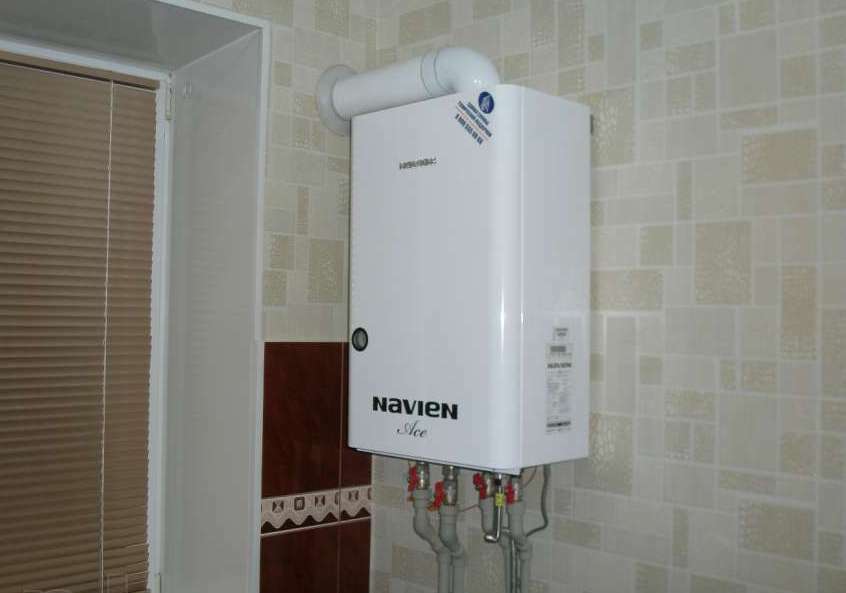
The reasons why the hot water boiler goes out are much more due to the peculiarities of its design. The problem is solved quite simply: to avoid overheating, choose a comfortable water temperature by changing the regulator on the control panel
If the operation is carried out according to the instructions, and the double-circuit unit still turns off, it is necessary to change the gasket of the water unit. Most likely it has worn out.
Conclusions and useful video on the topic
The following video clip will illustrate the reasons for the attenuation of the gas boiler burner:
Do not forget that the problems listed above may not arise if you monitor the condition of the gas equipment and carry out its preventive inspection.
At the same time, if you cannot determine the breakdown on your own, or there is already a pronounced smell of carbon monoxide in the room, immediately call the master.
Have you had to deal with the extinction of the flame in the burner of a gas boiler? Share your own experiences and troubleshooting options. Please leave comments in the block below, post a photo and ask questions on the topic of the article.


